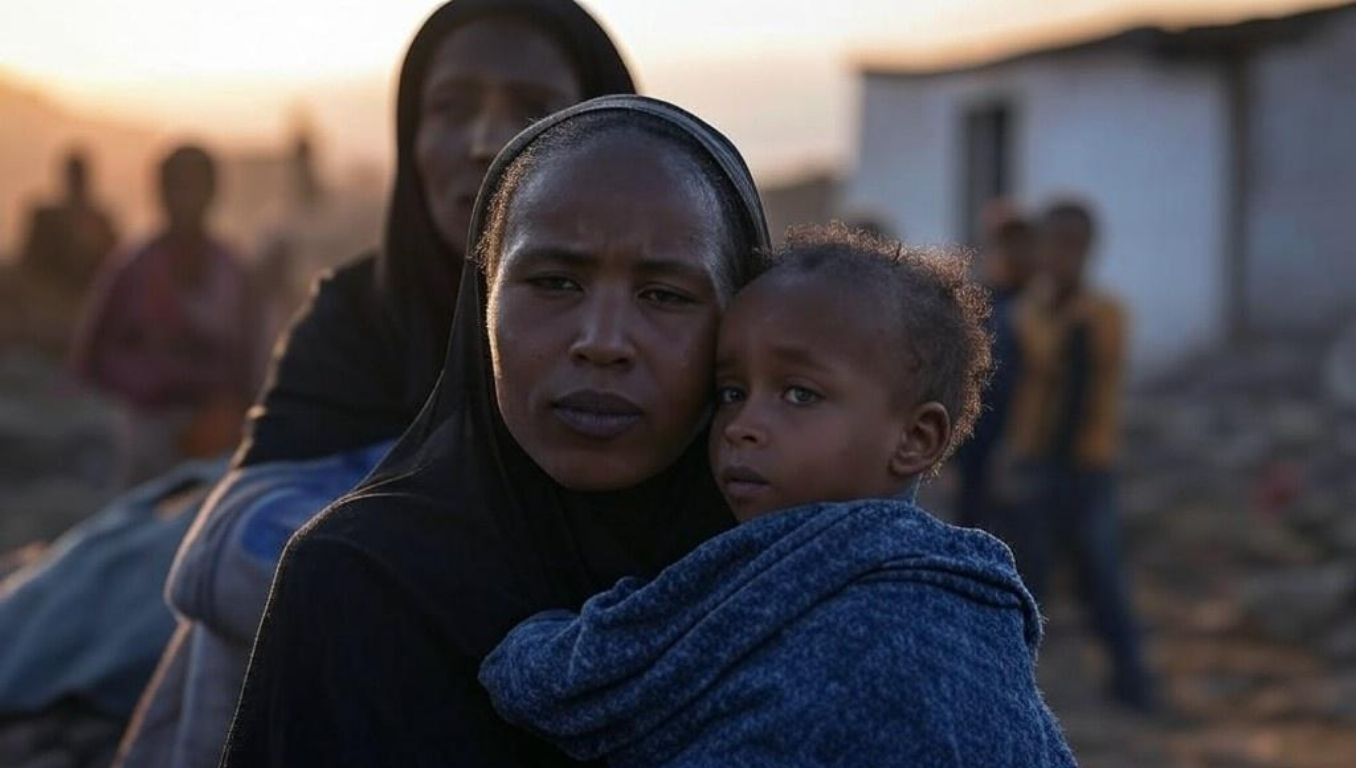Ethiopia is grappling with a series of earthquakes, including a significant 5.8-magnitude tremor, that have struck the northern regions of the country. These seismic events, centered in the Afar, Oromia, and Amhara regions, have not only displaced thousands but also raised fears of a volcanic eruption at Mount Dofan, a dormant volcano in the Afar region. This article delves into the ongoing crisis, its causes, and the potential implications for affected communities.
The Current Situation
Ethiopia Earthquake Impact
The earthquakes began after months of heightened seismic activity, with tremors causing widespread alarm and structural damage.
- Magnitude: The strongest quake measured 5.8 on the Richter scale.
- Affected Regions: Afar, Oromia, and Amhara.
- Latest Tremor: A 4.7-magnitude earthquake struck north of Metehara in Oromia.
Authorities have reported no casualties so far but warned of increasing seismic activity in both frequency and magnitude.
Evacuation Efforts
Approximately 80,000 residents live in the affected areas, with at least 2,000 people already displaced.
- Temporary Shelters: Vulnerable populations are being relocated to safer locations.
- Government Response: The Ethiopian Disaster Risk Management Commission is actively assessing damage and coordinating relief efforts.
Officials emphasized the need for continued monitoring and swift evacuation to safeguard lives as the situation evolves.
The Threat of Volcanic Eruption
Mount Dofan’s Activity
Mount Dofan, located in the Afar region near Segento, has shown signs of potential activity:
- Dormant Status: Previously inactive, but now a focus of concern due to seismic disturbances.
- Residents’ Fears: Fleeing their homes in anticipation of an eruption.
Authorities confirmed that while the volcano has ceased emitting smoke, the risk remains high, necessitating close monitoring.
Volcanic Hazards
If Mount Dofan erupts, potential hazards include:
- Lava flows destroying homes and infrastructure.
- Ash clouds impacting air quality and visibility.
- Disruption to agriculture and water supplies in the region.
Geological Context
Ethiopia and the Great Rift Valley
Ethiopia lies within the Great Rift Valley, part of the East African Rift System, which is among the most geologically active regions in the world.
- Extent of the Rift: Stretches from Jordan in southwestern Asia through eastern Africa to Mozambique.
- Tectonic Plate Activity: Caused by the divergence of tectonic plates beneath the valley, leading to frequent earthquakes and volcanic activity.
This tectonic movement makes Ethiopia particularly susceptible to seismic and volcanic events.
Causes of the Seismic Activity
- Tectonic Plate Movements
- Expansion of the African and Arabian plates along the Great Rift Valley causes stress, leading to earthquakes and potential volcanic activity.
- Rift Dynamics
- The East African Rift System is gradually splitting the African continent, creating zones of intense seismic stress.
- Subterranean Magma Activity
- Rising magma beneath the Earth’s crust contributes to both earthquakes and the potential reactivation of dormant volcanoes like Mount Dofan.
Government and Expert Response
Government Initiatives
- Deploying experts to assess geological and structural damage.
- Establishing emergency response teams in high-risk areas.
- Providing temporary shelters and essential supplies to displaced residents.
Expert Monitoring
Seismologists and volcanologists are closely observing the situation to predict potential eruptions and mitigate risks.
- Data Collection: Using seismic instruments to track tremors and magma movements.
- Public Warnings: Issuing timely alerts to affected communities.
Impact on Local Communities
- Displacement and Housing
- Thousands of residents have been forced to leave their homes, seeking refuge in temporary shelters.
- Economic Losses
- Damage to homes, infrastructure, and agricultural land threatens livelihoods in the affected regions.
- Psychological Stress
- The constant threat of earthquakes and volcanic activity is causing fear and uncertainty among residents.
Future Outlook
Mitigation and Preparedness
Ethiopia’s government is focusing on:
- Enhancing disaster preparedness programs.
- Strengthening early warning systems for earthquakes and volcanic eruptions.
- Collaborating with international experts for technical support.
Long-Term Implications
- Increased Risk Awareness: Communities in seismically active zones may need to adopt long-term measures to mitigate risks.
- Infrastructure Development: Building earthquake-resistant structures could minimize damage in future events.
Ethiopia’s ongoing seismic crisis highlights the challenges of living in a geologically active region. While the immediate priority is to ensure the safety and well-being of affected residents, the situation underscores the need for enhanced disaster preparedness and long-term resilience planning. As experts continue to monitor Mount Dofan and surrounding areas, the government’s response will play a crucial role in minimizing the impact of these natural events.















